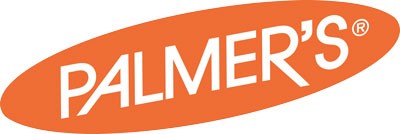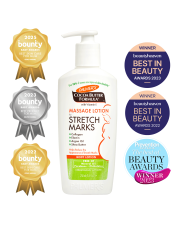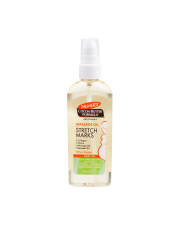
How to get rid of stretch marks
Up to 90% of women will develop stretch marks during their pregnancy[i]. For some, they’re a badge of honour, a sign that your body has achieved something incredible by creating new life.
But while there’s nothing medically or even physically wrong with stretch marks, many women feel self-conscious about them, and look for ways to get rid of stretch marks. In a recent survey, almost three in five (58%) of women reported being concerned about stretch marks. *
What are stretch marks?
Stretch marks, or as they are medically known, striae, are caused during a period of rapid growth in the body that stretches the skin.
They commonly occur during pregnancy as your body grows and changes in preparation for the arrival of your baby.
The surface layer of skin is called the epidermis, and the layer beneath that is the dermis, which contains bundles of collagen and elastin. Collagen and elastin help give our skin strength and elasticity.
As your baby grows and your skin stretches, the collagen bundles in the dermis layer can tear away from each other, allowing underlying blood vessels to show through. This causes stretch marks to appear as pink, red, purple or brown marks on the top layer of skin.

Source: Justin Lewis Research
Where can you get stretch marks?
Stretch marks can appear almost anywhere on the body that experiences fast growth. During pregnancy they often appear on the stomach, thighs, buttocks, arms, breasts and hips, but they’re most common on the belly area.
70% of women surveyed had developed stretch marks on the stomach, 55% on the thighs, and 51% on the hips. 32% had them on the bottom, while 22% had stretch marks on the chest.
Although the bottom and chest are the least common areas for women to get stretch marks, they are also the areas women are most concerned about, with 79% concerned about stretch marks on the bottom and 76% concerned about them on the chest area. *
Source: Justin Lewis Research
Who is more likely to develop stretch marks?
Anyone can develop stretch marks, including men, but pregnant women are more susceptible. Over two thirds (69%) of women surveyed had stretch marks from pregnancy. 54% had developed stretch marks due to weight gain, and 22% from puberty. *
During pregnancy, the body produces hormones that reduce collagen production and break down elastin fibres in your skin. These hormones also attract more water into the skin, which relaxes the bonds between collagen fibres and means the skin is more prone to tearing when experiencing rapid growth as the baby develops.
Young mothers, those with a higher BMI, and women who gain over 15kg in weight during pregnancy are more likely to develop stretch marks during pregnancy. [ii] Some women are also more genetically predisposed to develop stretch marks.
Different types of stretch marks
The medical community uses several terms to describe different types of stretch marks.
Pregnancy stretch marks are known as striae gravidarum. This term is used to describe the scarring of skin on the abdominal area, which often occurs as the baby grows rapidly in the final trimester of pregnancy.
When stretch marks first appear as purple, red or pink lesions, they are knowns as striae rubra. Over time the colouration fades and the marks become pale white or silvery lines, they are then known as striae alba.
Stages of stretch marks during pregnancy
Stage 1
Early stretch marks will appear pink in colour, and they may be itchy. The skin around them will look thin and flattened. Early stretch marks may appear any time during pregnancy, but usually once your bump begins to become more noticeable.
Stage 2
Gradually the stretch marks will grow longer and widen, and turn a brighter pink, red, or purple. This often happens in the final trimester of pregnancy, as your belly stretches to fit your growing baby.
Stage 3
In the months after pregnancy, once the stretch marks have matured and begun to heal, they will lose their colouration and start to fade to pale white or silver. They might also appear slightly depressed, and pucker or become irregular in their shape.

Can you get rid of stretch marks?
Stretch marks will fade and become less noticeable as they heal over time, but many women feel self-conscious about theirs and look for stretch mark removal treatments. If you’re looking for ways to get rid of stretch marks, there are a variety of options available.
Glycolic acid
Touted by some as a wonder beauty treatment in recent years, glycolic acid is used in a wide range of skincare products. Although the name may sound a little scary, glycolic acid is a naturally occurring substance derived from plants such as sugar cane, pineapple and sugar beet.
When applied topically it exfoliates the topmost layer of dead skin cells, revealing healthy skin cells below. Glycolic acid is often used to treat scarring, skin discolouration and signs of ageing, as it helps encourage the production of new skin cells. However, glycolic acid can take some getting used to. People can experience redness or peeling after the first few applications, and it may aggravate sensitive skin.
Laser treatment
Fractional laser treatment may be another effective way to treat stretch marks. The non-surgical procedure uses pulses of fractional laser light to reduce the appearance of stretch marks.
The treatment claims to helps stimulate collagen and elastin production in the dermal layer of skin where stretch marks form. Laser treatment may help reduce the appearance of striae rubra and help to smooth striae alba.
The procedure takes around 30 minutes and is relatively painless, but it can be expensive as repeat treatments are usually required to see significant results and must always be conducted by a trained professional and under the supervision of a doctor.
Palmer’s is not qualified to give medical advice and would always recommend consulting a medical professional before commencing treatment with glycolic acid or laser therapy.
Stretch mark creams or lotions
Applying stretch mark creams and lotions are another popular way to treat stretchmarks. Unlike glycolic acid, creams and lotions are soothing to the skin, and unlike laser treatment they are easily affordable for most women.
Almost half (47%) of women surveyed had used a specialist stretch mark cream or lotion as a preventative measure before developing stretch marks, while 41% had used a cream or lotion to treat stretch marks after they had developed.
Stretch mark removal cream or lotion helps to improve skin elasticity, preventing further stretch marks from forming while reducing the appearance of existing stretch marks. It is effective with both new and older stretch marks but achieves better results if used pre-emptively or as soon as you notice stretch marks appearing.
Of those who used stretch mark creams or lotions as a preventative measure, a third (33%) reported that it prevented them from developing stretch marks. In total, 85% of women found specialist stretch mark cream or lotion to be effective at preventing and treating stretch marks. [iii]
Unlike many other brands, Palmer’s Cocoa Butter Formula for Stretch Marks has an enhanced formula specially formulated for pregnancy, made with natural ingredients that have amazing benefits in preventing and removing stretch marks. Over 98% of women saw improved skin elasticity when using Palmer’s Stretch Marks products. *

Source: Justin Lewis Research
Natural ingredients and their benefits
Cocoa Butter
Cocoa butter naturally offers an incredible match for skin’s structure as it melts at skin temperature and matches skin’s oil balance. It also contains powerful antioxidants called polyphenols, which have a broad range of skin benefits including fighting skin degeneration, improving collagen production, and improving skin elasticity and skin tone.
Shea Butter
Shea butter contains naturally occurring vitamin A and vitamin E and is known for aiding a range of skin conditions, from blemishes and wrinkles to dermatitis and stretch marks. Shea butter has also been found to boost collagen production.[iv]
Argan Oil
Argan oil is another popular skincare product thanks to its non-greasy texture and quick absorption. Argan oil has a naturally high vitamin E and fatty acid content, meaning it increases skin elasticity, hydrates skin and helps to prevent moisture loss.
Collagen and Elastin
Our stretch mark cream contains collagen and elastin. These naturally occurring proteins found within the dermis and epidermis layers of skin are crucial to skin health and healing, and help to promote soft, supple skin.
Lutein
Lutein is a nutrient found in green leafy vegetables and egg yolk. It promotes skin health and appearance by increasing skin hydration and elasticity.[v]
No nasty ingredients
The new improved formula is free from synthetic vitamin A, mineral oils, parabens, phthalates, phenoxyethanol, artificial dyes, fragrances or allergens, so it’s gentle and safe for your skin and your growing baby.
* Based on a survey of 400 women in Australia aged 20-75 who had used stretch mark products in the past, prepared by Justin Lewis Research on behalf of Palmer’s.
[i] https://onlinelibrary.wiley.com/doi/abs/10.1111/bjd.13426
[ii] https://www.tandfonline.com/doi/abs/10.1080/014436104101001660779
[iii] Based on responses to an 8-week in-home user trial by 102 female patients aged 18 to 49.
[iv] http://article.sciencepublishinggroup.com/pdf/10.11648.j.ajls.20140205.18.pdf
[v] https://www.nutraingredients.com/Article/2007/04/19/Kemin-reports-strong-evidence-lutein-s-skin-health-benefits


.jpg)




